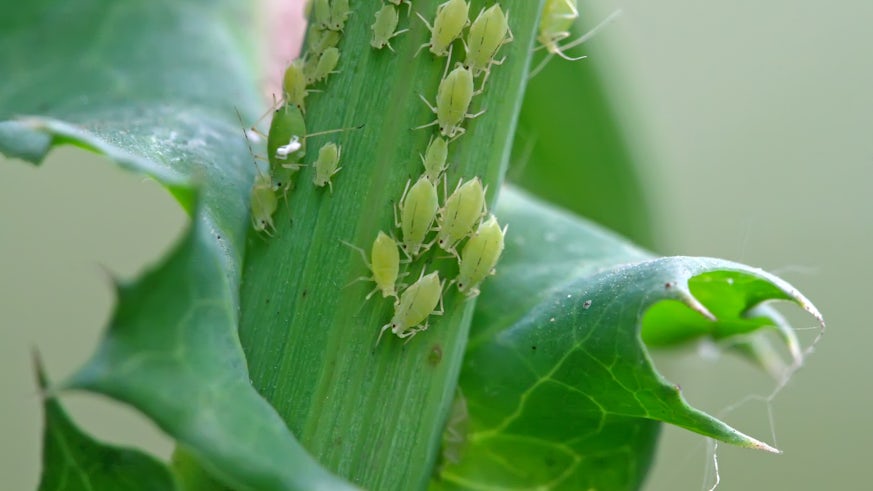Repelling pests with Nature’s chemicals
11 December 2020

Led by Professor Rudolf Allemann from the School of Chemistry, the team have developed processes that have allowed the chemicals to be produced in large quantities and at a fraction of the price of traditional pesticides.
The novel approach is currently being scaled up for production to protect high-value lettuce crops from aphids in Spain, through a commercial collaboration based in Cardiff.
The team, which also includes Professor John Pickett FRS from the School of Chemistry, have focussed specifically on semiochemicals - signalling chemicals used to carry information between living organisms.
The most prominent example of a semiochemical is a pheromone, which is emitted by members of a species to modify the behaviour of other members of the same species.
Pest insects mostly use their sense of smell to recognise the presence of pheromones, as they detect and avoid unsuitable ecosystems.
There is a growing belief among scientists that semiochemicals could be key to eradicating pests of major crops around the world, primarily because they can precisely target only the species causing harm.
The pesticides currently used by industry are broad-spectrum toxicants, meaning that both the pests and friendly insects can be affected by the crop treatment.
The team at Cardiff University has been developing methods for creating variations of semiochemicals in the lab using naturally occurring chemicals, and doing so in a way that makes the development process more predictable and suitable for large-scale production.
The method is based on fermentation, which takes natural products produced by an organism to make products that are useful to humans.
So far, the team has produced an aphid repellent derived from pest-damaged plants which has been shown to successfully repel a range of pests.
Furthermore, the team modified the repellent further so that the activity was reversed, resulting in a powerful aphid attractant.
This idea of being able to both ‘push’ and ‘pull’ a pest away from the crop holds massive potential and means that pests can not only be repelled but also guided away to other areas to protect against the crop.
In addition to the application of the novel process across Europe, the approach is also set to expand into research against major crop pests worldwide, including whitefly and sand flies which are vectors associated with human disease in South America, Asia and sub-Saharan Africa.
Professor Rudolf Allemann said: “Natural products have traditionally been obtained by extraction or by chemical synthesis in the laboratory, methods that often are operationally difficult and expensive.
“Our new method uses enzymes produced naturally by fermentation. Nature’s catalysts are often able to catalyse the conversion of nature-like compounds to bioactive molecules in highly efficient and scalable processes, that have the potential to be commercially viable to make, opening the way to many applications, for instance for crop production.”
Professor John Pickett FRS said: “For sustainable pest management we need new high-performance tools which naturally occurring chemical signals, including pheromones, offer but we have to give a helping hand to such technologies by new chemical innovations as represented here.”
Share this story
The School tackles the important scientific challenges of the 21st century which is the focus of its internationally leading research and education.


